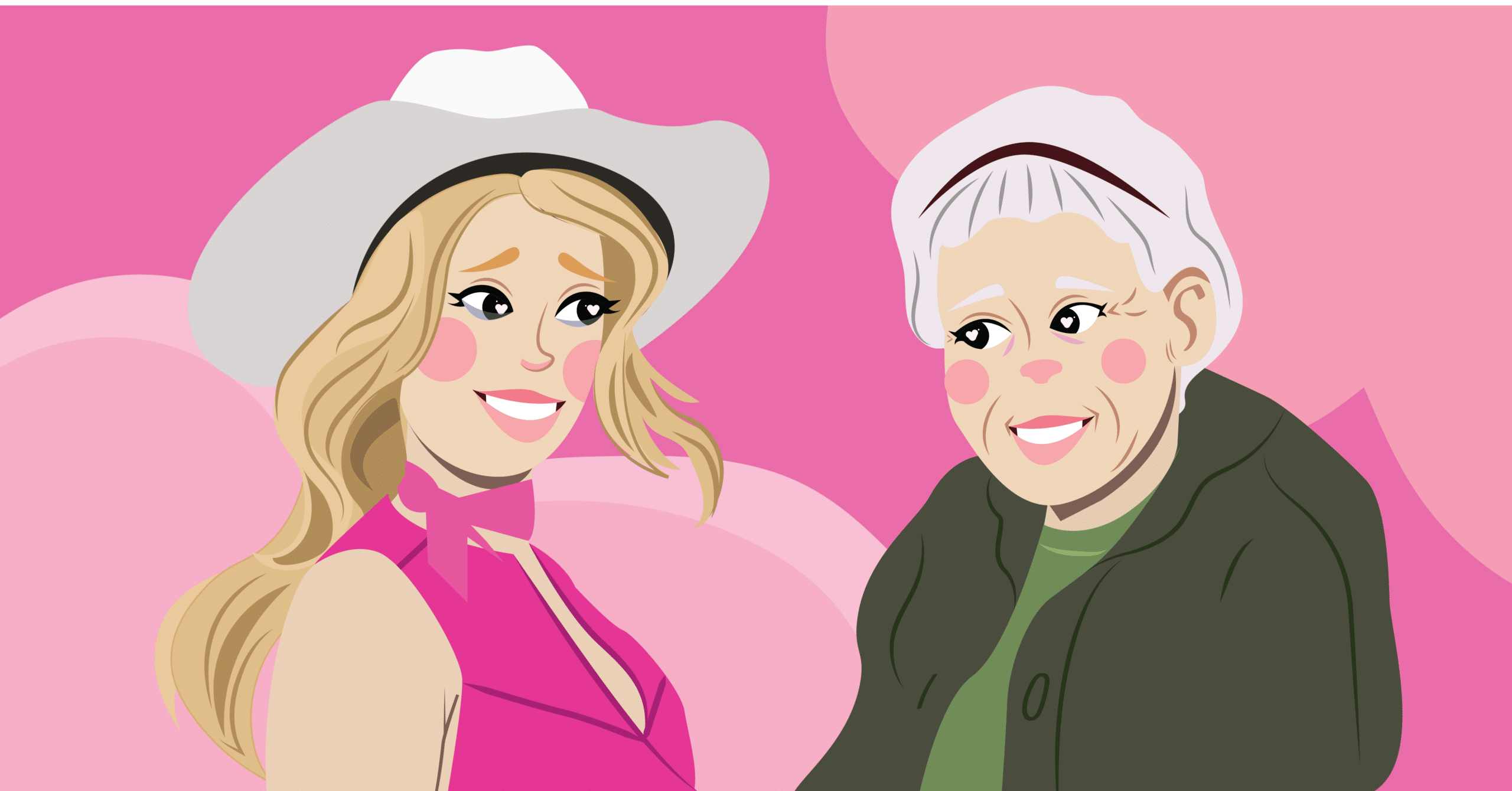Challenging the patriarchy: The power of the gaze
How the female gaze empowers both men and women and changes patriarchal narratives.
The media—be it books, movies, television, or podcasts—are powerful for their artistically appealing façades and storytelling depth. Written mediums such as literature are spaces where the reader has a unique opportunity to become intimately involved with a character’s consciousness, or as close as possible to their spirit. In visual mediums, this closeness is interfered with by the sensation of visuality, which initially distracts audiences from the characters’ inner lives. Acclaimed writer Donna Tart, author of The Secret History, sums it up perfectly when she says that “in films, we are voyeurs, but in novels, we have the experience of being someone else: knowing another person’s soul from the inside. No other art form does that.”
As such, media, but especially books and novels, are uniquely positioned to powerfully tell stories and impact a person’s identity, perception, and understanding of the real world moving forward. For far too long, our media has been a weapon for perpetuating harmful understandings of the world and the people who live and thrive in it. Mass media, especially, has been a catalyst for reinforcing patriarchy—which is already ubiquitous and suffocating without the help of TV, books, and film—and undermining men, women, and gender-nonconforming individuals alike. How we present stories and people determines how they are consumed by audiences, and this greatly shapes the tangible and symbolic world we live in.
In media studies, “the gaze” is a character’s awareness of being perceived through a lens from an outsider’s perspective, one that, historically speaking, has usually been the objectifying perspective of the heterosexual cisgender man or the patriarchal gaze. The idea behind the gaze is that people being gazed at are scrutinized into behaving a certain way that satisfies the gazer’s preferences. Despite the triumphs of feminism and gender equality, which should be celebrated and multiplied, we still live in a world where both men’s and women’s perceptions of self, relationships, and ideas about success are polluted by the subtle yet insidious nature of patriarchy.
I love Martin Scorsese’s films: his grittiness, boldness, and unapologetic showcasing of often troubled male characters prompt necessary societal reflection on ideas of masculinity, crime, depravity, and power. But underneath my veneration for Scorsese’s artistry is a discomfort stemming from his undeniably objectifying portrayal of women in his films. Recently, I watched the comedy After Hours, a 1985 Scorsese film chronicling a series of funny and surreal misadventures of a lowly office worker in New York City. Back in the day, the easiest and most effective way to establish a female character’s personality and purpose was through the camera’s exploration of her body, oftentimes, clothed sexually and for the appetite of the male viewer. After Hours is no exception, and not much has changed since the ’80s. Part of the recipe for the male gaze is to use a woman’s physicality to reveal her “personality,” an ineffective formula that ends up, at least historically speaking, creating one-dimensional characters, and in the process, attributes a woman’s worth to her body or how effectively she can please men.
Popular films like Blade Runner and mass-consumed books like the Fifty Shades of Grey series or The Great Gatsby (a personal favorite) also have in them scenes or characters that either glamorize or simply brush off instances of patriarchal harm and sexual or physical assault. If the media we regularly consume reflects a loose morality surrounding what constitutes assault, how does that impact our personal and learned understandings of what is normalized? Sadly, sometimes the films and books that are drenched in harmful gazes are the ones that are most popular and cherished.
Men also suffer from the restrictive lens of the male or patriarchal gaze, which sees men and masculinity as the epitome of strength, power, and accomplishment. In another one of Scorsese’s most renowned films, Taxi Driver, the leading character, Travis Bickle (played by Robert DeNiro), progressively spirals into psychosis as his job of being a taxi driver makes him feel menial and unimportant. Travis’s views on women centre around adoring and providing for them solely on the condition that they bolster his ego or make him feel “more like a man.” In other words, Travis is not your typical outright sexist. Instead, he is a man who measures the validity of his masculinity on how well he can either save women from the plight of gritty Americana or how well he can provide for them. In the ending sequences of the film, Travis spirals into psychotic violence due to his loneliness and fractured sense of self, a sense of self heavily rooted in idealized masculinity and a savior complex. For people watching, the political messaging of Scorsese’s film is stark: unhealthy and idealized notions of masculinity, as is perpetuated by the modern male gaze, hurts men and women equally.
The female gaze, on the other hand, focuses greatly on the inherent and valuable subjectivity of its subject, actively choosing to see both men and women as self-directed and emotionally sophisticated identities even if there is a focus on their bodies at some point. The male gaze works to both harm men and women, as demonstrated by the movies and books mentioned above. The female gaze sees women as more than what their bodies can offer and, similarly, this gaze allows space for men to define their masculinity based on ways that are grounded, sensitive, and emotionally cognisant. Popular media and the gazes present in them have the power to shape the culture surrounding politics and human interactions, and this culture is oftentimes what teaches people more than classrooms and parents ever can.
Associate Opinion Editor (Volume 50) — Mashiyat (”Mash”) is a second-year student completing a specialist in Neuroscience and a double minor in Biology and Professional Writing and Communications (PWC). As an associate opinion editor, she hopes to use her voice to encourage others to write freely and unabashedly about the things that mean most to them. In her free time, Mash can be found striking up conversations with strangers in the city, cooking for her family, and being anxious about her nebulous career plans!


